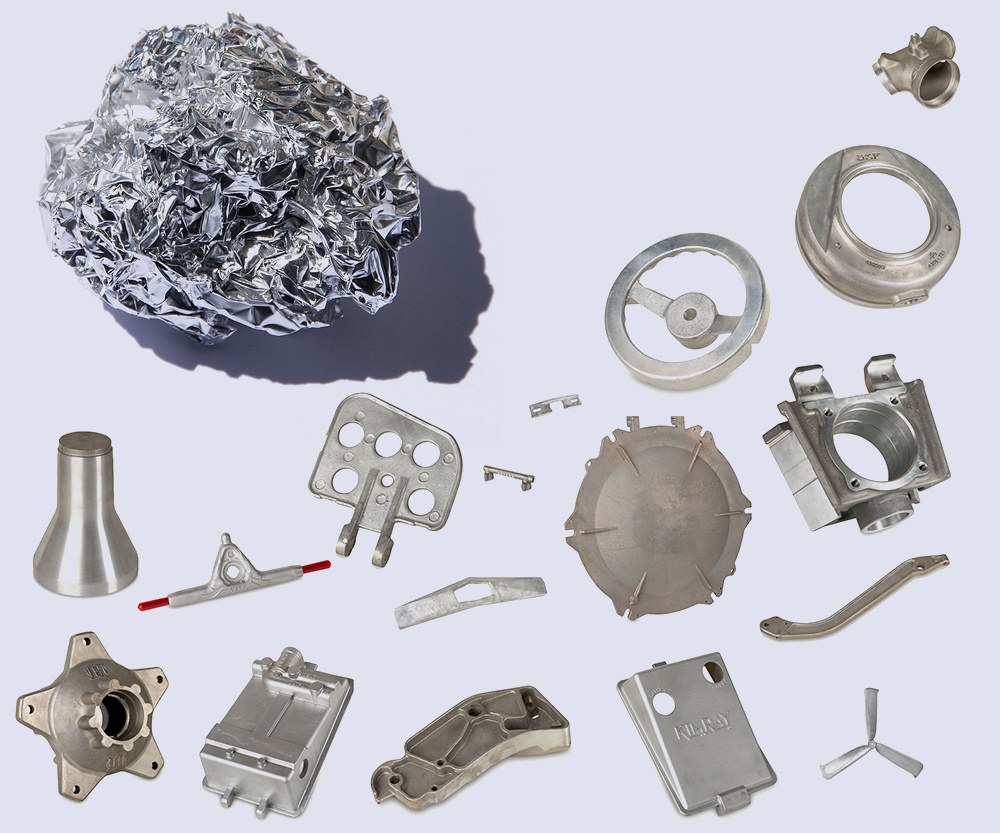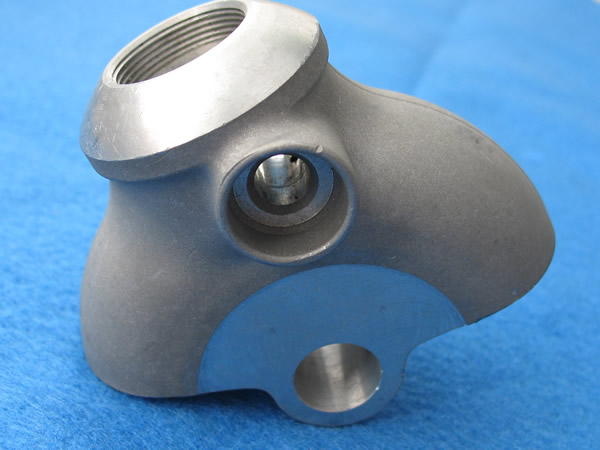The strengths of corrosion resistance in Aluminum Casting
Comprehending the Advantages and Selections of Aluminum Castings in Industry
Aluminum castings have actually become significantly important throughout various markets due to their distinct properties and making versatility. Their light-weight and corrosion-resistant nature makes them ideal for requiring applications. Various spreading methods enable exact and detailed layouts. As sectors advance, recognizing the array of aluminum spreading alternatives and their benefits is necessary. This expedition questions about their future function in manufacturing and sustainability. What lies ahead for light weight aluminum in these sectors?
The Fundamentals of Aluminum Casting Processes
Aluminum casting processes vary in strategy, they all share a typical goal: to change molten aluminum right into specific forms and components. The key methods of light weight aluminum casting consist of sand spreading, pass away casting, and investment casting. In sand casting, molds are created using sand, permitting for elaborate layouts but often leading to a harsh surface area coating. Die casting uses high-pressure injection of liquified light weight aluminum right into metal molds, yielding high accuracy and smooth surfaces, suitable for automation. Financial investment casting, or lost-wax spreading, includes producing a wax pattern coated with a ceramic covering, giving remarkable information and dimensional precision. Each approach has its particular applications and considerations, consisting of price, manufacturing volume, and complexity of the shapes generated. Recognizing these basic techniques is crucial for markets that depend on light weight aluminum castings to satisfy their layout and practical demands.
Secret Advantages of Using Aluminum Castings
Aluminum castings use various advantages that make them a preferred choice in various sectors. Among the crucial advantages is their lightweight nature, which permits simpler handling and lowered delivery prices. This characteristic adds to improved power effectiveness, especially in auto and aerospace applications. In addition, light weight aluminum displays exceptional corrosion resistance, expanding the lifespan of components and lessening maintenance needs.
An additional advantage is the convenience of light weight aluminum castings, which can be formed into complex shapes, making it possible for innovative styles that traditional materials may not suit. The thermal and electric conductivity of light weight aluminum likewise makes it perfect for applications requiring warm dissipation or effective electric links. Aluminum castings are recyclable, aligning with sustainability objectives and decreasing ecological impact. In general, the combination of stamina, toughness, and adaptability makes light weight aluminum castings a crucial element in modern production methods throughout multiple industries.
Typical Kinds Of Aluminum Castings
Aluminum castings are created through various approaches, each suited for different applications and needs. Among the most usual strategies are sand casting, which provides flexibility and cost-effectiveness, and pass away casting, understood for its accuracy and effectiveness. Understanding these processes is important for selecting the suitable casting approach for particular commercial needs.
Sand Casting Process
A substantial part of light weight aluminum castings in market is created via the sand casting process, which is renowned for its versatility and cost-effectiveness. This approach involves producing a mold from a sand mixture, permitting the production of complicated forms and big parts. Sand casting is particularly advantageous for tiny to medium-sized production runs, as it requires minimal initial investment in tooling. The process begins with pattern production, followed by mold prep work, pouring liquified aluminum, and finally, cooling and completing. The high thermal conductivity of light weight aluminum assurances even cooling down, reducing the risk of flaws. Sand casting stays a preferred choice for suppliers seeking effectiveness and flexibility in their light weight aluminum casting applications.
Die Casting Techniques
Die casting techniques stand for a highly efficient method for producing light weight aluminum castings, particularly matched for high-volume production. These methods mainly consist of 2 typical kinds: warm chamber and chilly chamber pass away casting. In hot chamber pass away spreading, the molten light weight aluminum is infused right into the mold from a tank that is warmed, making it excellent for low-melting-point alloys. On the other hand, cool chamber pass away casting includes pouring the liquified light weight aluminum right into a separate chamber prior to shot, which fits higher melting-point products. Both approaches use accuracy fit complex geometries and achieving superb surface area coatings. Furthermore, die spreading is recognized for its rapid cycle times, minimizing production expenses while maintaining uniformity in quality across huge amounts of components.
Applications in the Automotive Sector
Changing car layout and efficiency, light weight aluminum castings play an important duty in the automobile market. These castings add considerably to weight decrease, enhancing fuel efficiency and overall car dynamics. Secret applications consist of engine blocks, transmission housings, and suspension parts, where their light-weight nature and stamina are critical.
Aluminum castings also allow for complicated geometries, enabling suppliers to develop elaborate layouts that optimize airflow and reduce drag. This capability is particularly beneficial in electric and hybrid lorries, where efficiency and effectiveness are critical.
Additionally, the rust resistance of light weight aluminum expands the life expectancy of automobile visit the site parts, decreasing maintenance prices and boosting vehicle reliability. The versatility of aluminum castings sustains both automation and custom-made applications, making them a favored choice among automobile engineers and developers. Aluminum Casting. As the industry remains to innovate, aluminum castings will remain a critical element in the search of sophisticated automotive modern technologies
Aerospace Sector Use
In the aerospace industry, aluminum castings are essential to the design and performance of airplane parts. These castings are made use of in various applications, consisting of engine parts, structural components, and indoor installations. Their light-weight nature adds to enhanced fuel performance and general efficiency, which is necessary in aerospace engineering.
Aluminum castings likewise use exceptional strength-to-weight ratios, enabling suppliers to develop elaborate designs without compromising structural honesty. The ability to generate intricate geometries makes aluminum casting a recommended choice for components that need accuracy and integrity.
Additionally, light weight aluminum's resistance to deterioration improves the durability of aerospace components, decreasing upkeep prices and boosting safety (Aluminum Casting). The casting procedure enables for high-volume manufacturing, satisfying the industry's needs for effectiveness. On the whole, aluminum castings play a pivotal function in advancing aerospace innovation and maximizing aircraft design, contributing to the industry's ongoing innovations

Benefits Over Various Other Products
Aluminum castings use substantial benefits over other products, making them a preferred choice in various industries. Among the primary advantages is their light-weight nature, which contributes to decreased energy usage and enhanced efficiency in applications such as automobile and aerospace. Additionally, aluminum exhibits outstanding corrosion resistance, enabling for long term longevity and decreased maintenance prices.
The product's exceptional thermal and electric conductivity additionally improves its allure, specifically in applications requiring heat dissipation or reliable power transfer. Aluminum Casting. Aluminum castings additionally supply excellent dimensional security, guaranteeing exact resistances and lowering the chance of issues throughout the production procedure
Additionally, the convenience of aluminum allows for complex shapes and intricate designs, which can be achieved via different casting approaches. This versatility makes aluminum a useful option for makers intending to introduce while keeping cost-effectiveness and high quality. To end, aluminum castings attract attention because of their one-of-a-kind combination of properties that provide to diverse commercial demands.
Future Patterns in Aluminum Casting Modern Technology
Future trends in light weight aluminum casting modern technology are progressively concentrated on automation and the development of innovative alloys. Automation stands to enhance efficiency and accuracy in casting processes, lowering labor prices and boosting product consistency. Simultaneously, innovations in alloy solutions promise to broaden the series of applications for light weight aluminum castings, attending to specific performance needs in numerous sectors.
Automation in Casting Processes

Advanced Alloys Development
With the continuous evolution of material scientific research, the advancement of advanced alloys is readied to change light weight aluminum casting technology considerably. These cutting-edge alloys are made to enhance mechanical properties, corrosion resistance, and thermal stability, catering to varied commercial applications. Scientists are concentrating on hybrid alloys that integrate aspects such as magnesium, silicon, and zinc to achieve peak efficiency. Additionally, advancements in computational modeling and simulation are enabling the forecast of alloy actions under various conditions, enhancing the design procedure. The integration of recycling innovations is also becoming vital, enabling makers to generate high-performance light weight aluminum castings while minimizing ecological effect. As these click for info trends continue, the aluminum spreading sector is likely to witness considerable enhancements in effectiveness, sustainability, and product high quality.
Regularly Asked Concerns
Exactly How Is Aluminum Casting Eco-friendly?
The inquiry of aluminum spreading's environmental friendliness emerges from its recyclability and lower power usage contrasted to other metals. Additionally, developments in lasting practices further boost its environment-friendly reputation within producing processes.
What Is the Regular Lifespan of Aluminum Castings?
The common life expectancy of aluminum castings varies based upon application and setting, typically varying from numerous years to years. Elements such as exposure to destructive aspects and mechanical tension can substantially affect their sturdiness and long life.
Can Aluminum Castings Be Recycled?
Aluminum castings can indeed be recycled. This procedure considerably lowers waste and preserves resources, permitting suppliers to reuse materials efficiently. Recycling aluminum castings adds to sustainability and lessens the ecological impact related to light weight aluminum manufacturing.
What Are the Typical Flaws in Aluminum Castings?
Usual issues in aluminum castings include porosity, shrinkage, imbalance, and surface flaws. These concerns can emerge from insufficient pouring methods, improper alloy make-up, or inadequate air conditioning, eventually influencing the quality and efficiency of the last product.
Just how Do I Pick the Right Aluminum Casting Process?
Selecting the appropriate aluminum spreading process needs reviewing production quantity, component complexity, and wanted properties. Variables such as expense, lead time, and product features additionally affect the choice, making sure excellent outcomes for details applications.